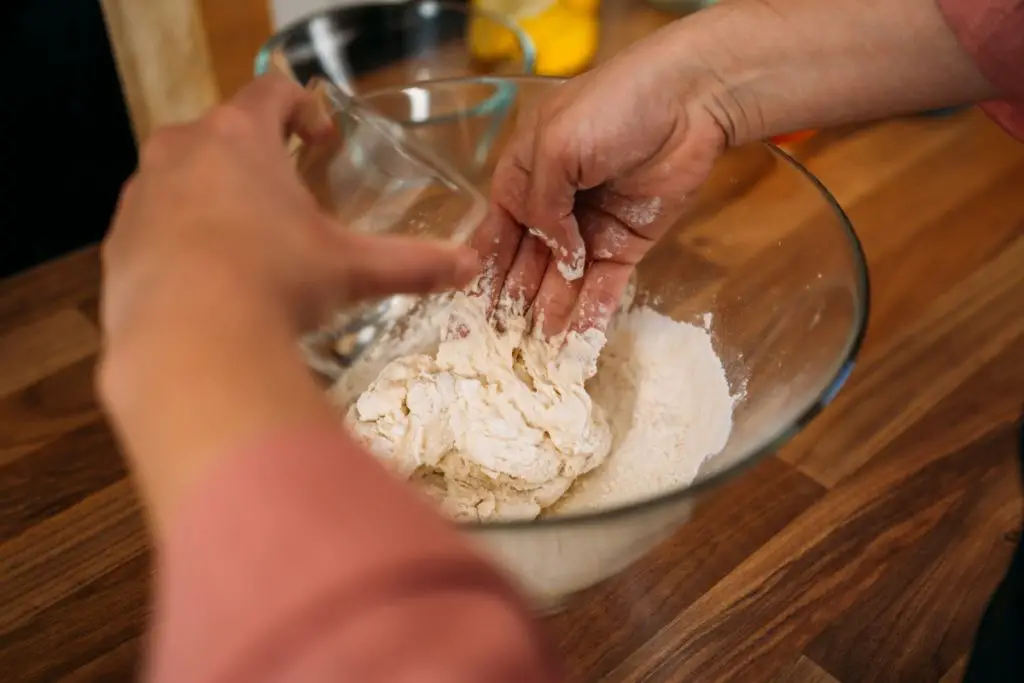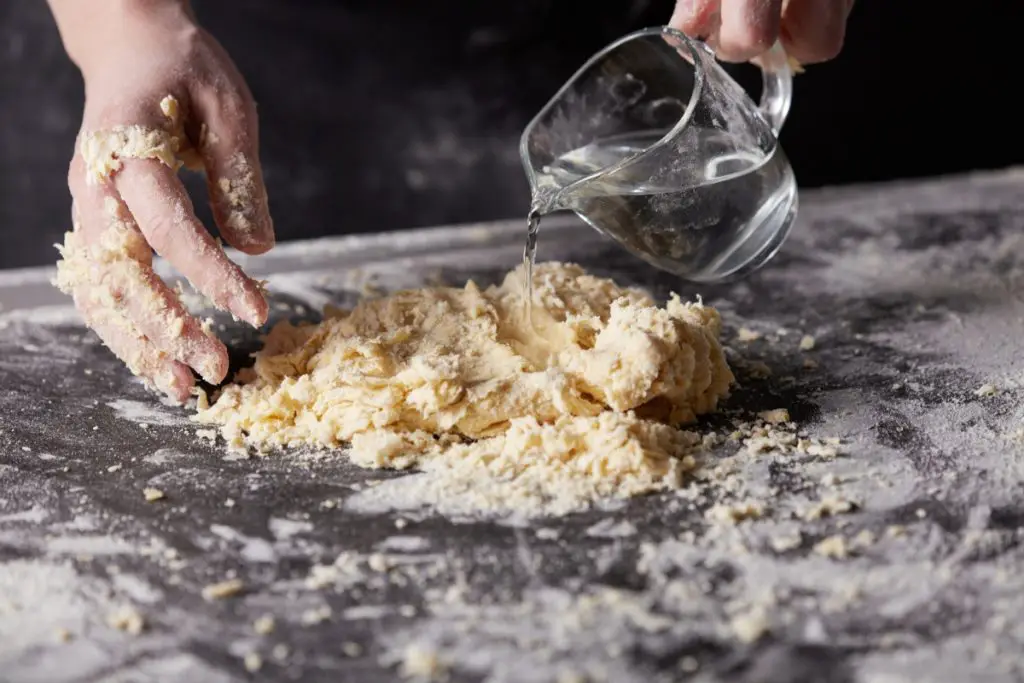Water is one of the key ingredients of every dough so it is really important to know why, when, and how much water to add to bread dough. Adding water to bread dough may seem like science but is it not so complicated when you know simple facts and rules.
The use of water in bread dough is essential to the overall consistency of the bread. Adding water to bread dough is necessary for the fermentation of yeast and is also required for the production of gluten. When you should add water and how much can differ depending on the bread dough recipe.
It’s no secret that baking bread, or almost anything for that matter, can be a little daunting. However, a thorough understanding of all the ingredients and how they work together can go a long way in helping you bake the perfect loaf of bread! Let’s look at the role and the importance of water in the making of bread dough.
Why Put Water In Bread Dough

Water is directly responsible for the consistency of bread dough. Once the water comes into contact with flour, it causes it to soften and swell up. Having a softer dough is preferred over more firm doughs since the process of yeast fermentation happens faster in a soft dough.
Simply put, water is one of the essential ingredients in any bread dough recipe.
During this process, the presence of water is also responsible for the production of gluten, which gives the dough the stretchy quality that is needed.
As for the other ingredients used in bread dough like sugar, salt, and yeast, water functions as a dispersing agent and is also necessary for dissolving each of these ingredients.
What Kind Of Water Is Best For Bread Baking?
When compared to the other ingredients involved in making bread dough, the quality and type of water are often overlooked. For example, when it comes to flour, most people will be pretty specific as to what type they would prefer to use.
With regards to the type of water used in bread dough, using tap water or filtered water is down to your personal preference. It is the quality of the water used that is more important than most are made aware. The quality of water can be broken down into just two components:
- Soft water
- Hard water
By now, you might be thinking, “How on earth can water be hard or soft?”. However, this has nothing to do with the texture of the water but instead their mineral content. The hardness or the softness of water is measured by the number of particles per million minerals.
Water that contains 0 to 50 particles per million minerals (PPM) is considered to be soft. In the 60 – 120 PPM range, water is considered Medium-Hard.
Hard water has a PPM range of 120 – 180 and Very Hard water measures above 180 PPM. The best water to use for bread baking is medium-hard water of roughly 100 – 120 PPM.
The amount of minerals, specifically Magnesium and Calcium in medium-hard water, is an ideal food source for yeast. If there are too few minerals, the yeast will not ferment.
Too much, and the proteins in your flour will struggle to absorb all of the water and can even tighten the gluten, which will ultimately negatively affect the texture of the bread.
To know whether the water you are using is hard or soft, you are able to purchase Hard water test kits from most home improvement stores at relatively affordable prices (roughly $5 – $10). However, there is a basic way to test it yourself, though it might not be as accurate.
All you’ll need is a clear glass or plastic bottle that can be sealed, water, and some liquid soap. All you need to do is fill your bottle with the water that you want to test, add a few drops of liquid soap, close the bottle, and then shake it for a few seconds.
If the number of fluffy bubbles is minimal and the water appears to be cloudy or milky, the water is definitely hard. On the other hand, soft water will have significant bubbles, and the water will be clear.
Why Use Ice Water For Dough
The temperature of the water used in bread dough will have a significant effect on the final product. This is mainly to do with how the temperature affects the yeast in the dough.
During the mixing process, if the dough is too warm, the yeast will begin to ferment too quickly, which will cause the dough to tear when stretching it, and its taste might also become sour.
Using ice water ensures that the dough, and specifically the yeast, stays cool during the mixing process. This causes the yeast to ferment at a much slower pace, which results in more complex flavors being developed, and the dough will also be much easier to stretch.
TIP: You might be interested in reading this article too:
Yeast In Bread Dough: Why, When & How Much (Complete Guide)
When To Add Water To Bread Dough

Especially when using a mixer, it will be a good idea to add your water BEFORE the flour, as this will prevent the flour from clumping and ultimately cause your bread to be lumpy. Make sure not to add more water once the dough has already started to rise.
TIP: Not sure if you have all the necessary bread baking equipment at home? Check out my recommended picks below (Amazon links):
-
- Scale: Nicewell 22lb Digital Kitchen Scale
- Mixing Bowls: OXO Stainless Mixing Bowls Set
- Pastry Scraper: OXO Stainless Pastry Scraper
- Loaf Pan: OXO Non-stick Loaf Pan
- Kitchen Thermometer: ThermoPro Digital Thermometer
- Stand Mixer (optional): Kenwood Kmix Stand Mixer
How Much Water In Bread Dough
Using too much water will render the dough unable to hold its shape in the baking process and negatively affect the crumb of the final product. Too little, and the dough will become dry, negatively affecting the gluten, which will prevent the dough from being easily stretched.
Using the correct amount of water in any bread dough recipe is essential to ensure adequate hydration of the dough. Ultimately, the exact amount of water that you use will depend on the size of the loaf you are attempting to bake.
Ratio Of Water To Flour In Bread Dough
The amount of water you used in your bread dough recipe is directly linked to the amount of flour needed. Having an adequate ratio to work with will be very helpful when wanting to change the amount of the recipe that you are following.
A safe ratio to use that is common to many bread dough recipes’ is a ratio of 5:3 flour to water (including your salt and yeast.)
Conclusion
Even though it is an essential ingredient, water, without doubt, plays a much more intricate role in the making of bread dough than many realize. The Why, When, and How Much are essential things to know to make the perfect loaf. Now that we have each of those covered, you are all set to make your best loaf of bread yet!
TIP: Do you know what to do if you add too much water to in bread dough? Check out this article:
